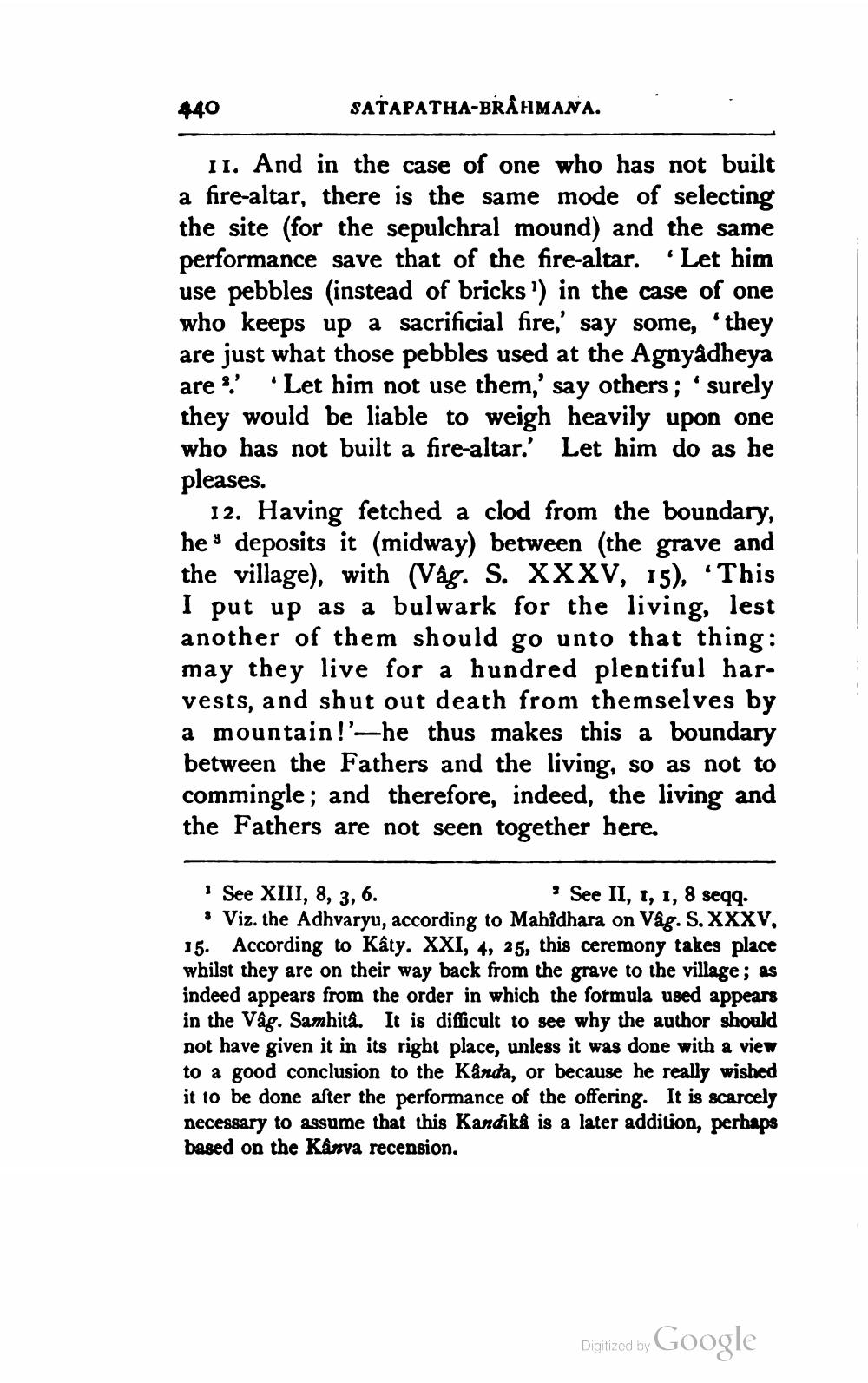________________
440
SATAPATHA-BRAHMANA.
11. And in the case of one who has not built a fire-altar, there is the same mode of selecting the site (for the sepulchral mound) and the same performance save that of the fire-altar. Let him use pebbles instead of bricks ') in the case of one who keeps up a sacrificial fire,' say some, 'they are just what those pebbles used at the Agnyâdheya are ? Let him not use them,' say others; 'surely they would be liable to weigh heavily upon one who has not built a fire-altar.' Let him do as he pleases.
12. Having fetched a clod from the boundary, he deposits it (midway) between the grave and the village), with (Våg. S. XXXV, 15), “This I put up as a bulwark for the living, lest another of them should go unto that thing: may they live for a hundred plentiful harvests, and shut out death from themselves by a mountain!'-he thus makes this a boundary between the Fathers and the living, so as not to commingle; and therefore, indeed, the living and the Fathers are not seen together here.
See XIII, 8, 3, 6.
See II, 1, 1, 8 seqq. • Viz. the Adhvaryu, according to Mahidhara on Våg. S. XXXV, 15. According to Kâty. XXI, 4, 25, this ceremony takes place whilst they are on their way back from the grave to the village; as indeed appears from the order in which the formula used appears in the Vâg. Samhita. It is difficult to see why the author should not have given it in its right place, unless it was done with a view to a good conclusion to the Kanda, or because he really wished it to be done after the performance of the offering. It is scarcely necessary to assume that this Kandikå is a later addition, perhaps based on the Kanva recension.
Digitized by Google




